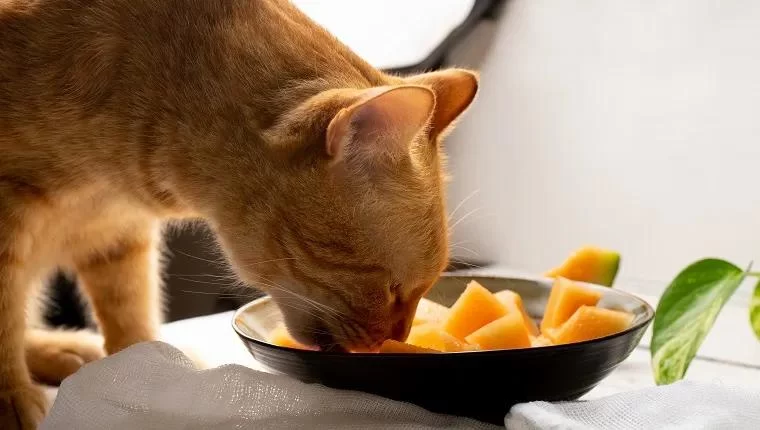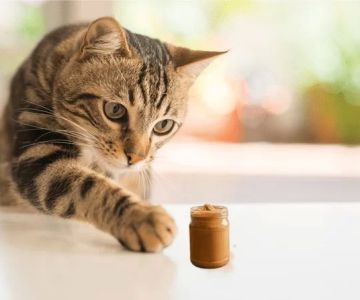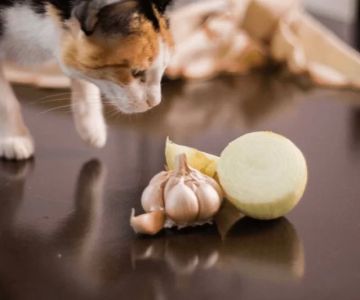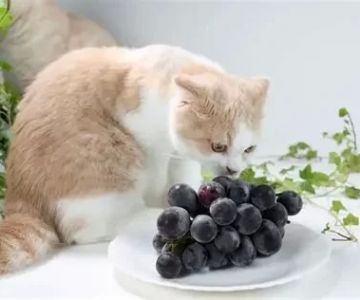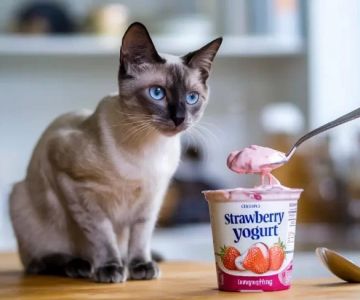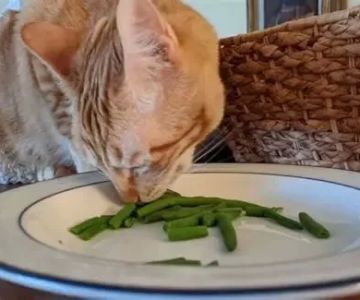Can Cats Eat Cantaloupe? Benefits and Safety Tips for Feeding Cats
As a cat owner, I’m always curious about which fruits and foods are safe for my furry friends. Cantaloupe, with its sweet and juicy flesh, often comes to mind as a potential treat. But the question is: can cats eat cantaloupe? I’ve asked myself this same question when my cat, Whiskers, started showing interest in the fruit every time I cut into it. After doing some research and testing it out with Whiskers, I found that cantaloupe can indeed be a safe and healthy treat for cats when given in moderation. However, there are some important things to keep in mind to ensure that your cat enjoys it safely. Let me share everything I learned about feeding cantaloupe to cats and the benefits and precautions that come with it.
Why Are Cats Interested in Cantaloupe?
One of the first things I noticed when I brought home a cantaloupe was how quickly Whiskers became interested. Cats are known for being curious creatures, and Whiskers is no exception. She seemed to be drawn to the smell and texture of the fruit, and at first, I was curious if it was safe for her to try. It turns out that many cats are naturally intrigued by the scent of fresh fruits like cantaloupe. It could be because of the water content and the sweet fragrance that mimics the smells they encounter in the wild.
While it's not a typical food source for cats, they are obligate carnivores, meaning their diet primarily consists of meat. However, small amounts of fruits like cantaloupe can be a fun and refreshing treat, as long as they don’t interfere with their main source of nutrition, which should still be animal-based protein. It’s important to understand that cantaloupe shouldn’t be a primary food source but rather an occasional snack or supplement to their diet.
Health Benefits of Cantaloupe for Cats
When I first introduced cantaloupe to Whiskers, I was curious to see if there would be any health benefits. Cantaloupe is packed with nutrients that can benefit your cat in a few ways, including the following:
1. Hydration
Cantaloupe has a high water content, making it an excellent way to help keep your cat hydrated. This is particularly useful during the hotter months when cats might not drink enough water. Whiskers, like many cats, isn’t always the best at drinking water on her own, so adding a bit of cantaloupe to her diet has been a way to encourage hydration. The juicy texture is refreshing, and I’ve noticed that she’s more likely to drink water after having a small amount of cantaloupe.
2. Low in Calories
Another reason I’ve included cantaloupe in Whiskers' diet is because it's low in calories. Cantaloupe is a great way to provide a satisfying snack without adding a lot of extra calories to her daily intake. This is especially helpful for cats that may need to lose a little weight or for those who need a healthy treat between meals. Since cantaloupe is low in fat and carbohydrates, it offers a light and guilt-free snack option.
3. Rich in Vitamins and Antioxidants
Cantaloupe is a good source of vitamins A and C, both of which are important for a cat’s overall health. Vitamin A supports healthy vision, which is important for cats, while vitamin C acts as an antioxidant, helping to neutralize harmful free radicals in the body. Antioxidants play a key role in maintaining your cat’s immune system and preventing chronic diseases. Although cats can produce their own vitamin C, the antioxidant properties in cantaloupe can still offer an additional benefit for their health.
Are There Any Risks to Feeding Cats Cantaloupe?
While cantaloupe offers several health benefits for cats, it’s essential to feed it properly and be aware of potential risks. After giving Whiskers a few pieces, I kept a close eye on her reaction to make sure there weren’t any adverse effects. Here are some things to keep in mind:
1. Choking Hazard
One of the first precautions I took was to cut the cantaloupe into small, manageable pieces. Large chunks can be a choking hazard for cats, especially if they’re not used to eating fruits. Be sure to remove any seeds from the cantaloupe, as they could pose a choking risk or cause digestive issues. Cutting the fruit into small pieces makes it easier for your cat to chew and swallow safely.
2. Digestive Issues
While cantaloupe is generally safe for cats, too much of it can cause digestive upset. Cats have sensitive stomachs, and introducing a new food can sometimes lead to diarrhea or vomiting. When I first started feeding Whiskers cantaloupe, I offered only small amounts to avoid overwhelming her digestive system. Over time, I gradually increased the portion, making sure to monitor her for any signs of discomfort. If your cat has a sensitive stomach, it’s best to offer cantaloupe in very small amounts and observe their reaction.
3. Not a Substitute for a Balanced Diet
It’s important to remember that cantaloupe should not replace a balanced, meat-based diet for your cat. Cats are obligate carnivores, meaning they need a diet rich in animal protein to thrive. While cantaloupe can be a healthy treat, it should never be used as a main food source. I always make sure that Whiskers’ primary food consists of high-quality cat food designed to meet all her nutritional needs.
How to Safely Feed Cantaloupe to Your Cat
If you’re considering giving cantaloupe to your cat, here are a few simple steps to ensure it’s a safe and enjoyable treat:
1. Start Small
Begin by offering your cat a tiny piece of cantaloupe to see how they respond. If they show interest and don’t experience any negative reactions, you can gradually increase the portion size. Remember, moderation is key.
2. Remove the Seeds
Before giving your cat cantaloupe, be sure to remove all the seeds. Seeds can be a choking hazard and may cause digestive issues, so it’s best to avoid them altogether.
3. Cut into Small Pieces
Cut the cantaloupe into small, bite-sized pieces that your cat can easily handle. This will reduce the risk of choking and make it easier for your cat to enjoy the treat.
4. Limit Frequency
Although cantaloupe is safe for cats in moderation, it should not be a daily treat. I recommend offering cantaloupe as an occasional snack, about once or twice a week, to provide some variety in your cat’s diet without overdoing it.
Other Fruits That Are Safe for Cats
If your cat enjoys cantaloupe, you might also want to try other fruits that are safe for them. Some options include watermelon, blueberries, and small pieces of apple. Like cantaloupe, these fruits should be given in moderation and cut into small pieces. Always be cautious with fruits that contain seeds or pits, as these can be dangerous for cats.
Ultimately, cantaloupe can be a healthy and fun treat for your cat when fed properly. By following the tips above and keeping moderation in mind, you can safely offer this refreshing fruit as an occasional snack. Whiskers certainly enjoys her cantaloupe treats, and I’m glad I can share this sweet snack with her in a way that’s both safe and beneficial for her health.

